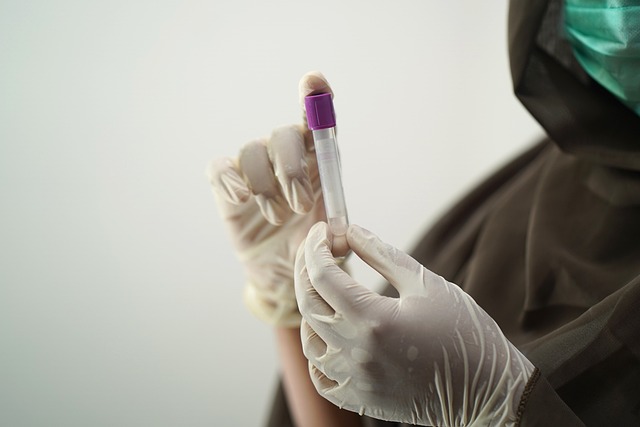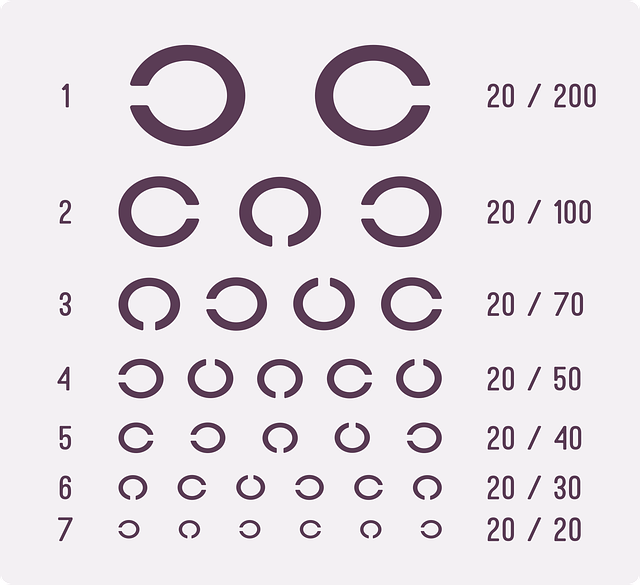The UK's National Health Service (NHS) supports individuals with diabetes in effectively managing their condition through home blood glucose testing. This self-monitoring involves using NHS-provided guidance and kits along with professional training to accurately perform tests, interpret results, and adjust diet, exercise, or medication accordingly. It is crucial for those new to self-monitoring to consult with their GP or diabetes nurse for proper instruction on UK diabetes blood tests. Regular monitoring requires clean equipment, careful handling of the blood glucose meter, and systematic recording of results to ensure consistency. Individuals must adhere to guidelines by calibrating glucometers, using appropriate lancets, and storing test strips properly to maintain accuracy. Cohesive blood sampling techniques can enhance comfort and reliability. Keeping a detailed log of readings in relation to meals, activities, and medication is key for understanding patterns and informing management decisions. Consistent home monitoring with UK Diabetes Blood Tests empowers patients to proactively manage their condition, reducing the risk of complications by enabling timely, informed medical decisions and integrating test results into daily health routines for optimal diabetes control.
Managing one’s health from the comfort of home has become increasingly feasible, particularly with advancements in at-home health monitoring. This article delves into the nuances of conducting UK Diabetes Blood Tests outside traditional clinical settings, empowering individuals to master self-monitoring. We provide a comprehensive guide, essential equipment lists, and procedures for safely and accurately performing these tests. Additionally, we explore how to interpret your results, enabling you to understand the implications of your UK Diabetes Blood Test at home. This knowledge is pivotal for proactive diabetes management and peace of mind.
- Mastering Self-Monitoring: A Guide to UK Diabetes Blood Tests for Individuals at Home
- Essential Equipment and Procedures for Conducting UK Diabetes Blood Tests Outside Clinics
- Interpreting Your Results: Understanding the Implications of Your UK Diabetes Blood Test at Home
Mastering Self-Monitoring: A Guide to UK Diabetes Blood Tests for Individuals at Home

Managing diabetes effectively requires consistent monitoring of blood glucose levels, which is crucial for maintaining health and preventing complications. In the UK, individuals with diabetes have the option to conduct their own blood tests at home, a practice that mastering self-monitoring can significantly enhance disease management. The UK National Health Service (NHS) provides guidance and support for those interested in self-monitoring their blood glucose levels. Home testing kits are readily available, and healthcare professionals offer training to ensure individuals understand how to use the equipment correctly and interpret the results accurately. Regular home blood tests allow for immediate adjustments to diet, exercise, or medication as needed, providing a level of control and convenience that is instrumental in managing this chronic condition. It’s important to follow the NHS guidelines and maintain open communication with healthcare providers to ensure optimal diabetes management. Those who are new to self-monitoring should start by scheduling an appointment with their GP or diabetes nurse to receive comprehensive instruction on how to perform UK diabetes blood tests, understand the readings, and manage their condition effectively at home. Additionally, individuals must always keep their testing equipment clean, handle their blood glucose meter with care, and record their results systematically for future reference and medical consultations. With practice and guidance, self-monitoring of blood glucose becomes a routine part of daily life for those managing diabetes in the UK.
Essential Equipment and Procedures for Conducting UK Diabetes Blood Tests Outside Clinics

For individuals managing diabetes in the UK, regular blood testing is a cornerstone of effective diabetes management. To safely and accurately conduct these tests outside of clinical settings, it’s essential to have the appropriate equipment and follow established procedures. A glucometer, which is a small, portable device, serves as the primary tool for measuring blood sugar levels. Ensure you select a reliable glucometer that is compatible with your healthcare provider’s recommendations. For accuracy, use lancets specifically designed for fingertip punctures, and always calibrate your glucometer according to the manufacturer’s instructions before taking a reading.
Additionally, test strips are necessary for the glucometer to function; each strip has a tiny chemical reaction site where a drop of blood is placed. It’s important to handle these strips with care and store them at room temperature away from direct sunlight to maintain their integrity. Cohesive blood sampling techniques, such as obtaining a sample from the side of the fingertip or alternative sites like the forearm or palm, can minimize discomfort and ensure consistent results. Keeping a log of your blood sugar readings along with meal timings, physical activity, and medication administration helps track patterns over time and allows for more informed decisions regarding diabetes management in consultation with healthcare professionals. Regularly checking the expiration date on both glucometer strips and lancets ensures the accuracy and reliability of your home blood testing regime.
Interpreting Your Results: Understanding the Implications of Your UK Diabetes Blood Test at Home

Conducting a UK Diabetes Blood Test at home offers convenience and privacy, enabling individuals to monitor their blood glucose levels effectively. Interpreting the results of such a test is crucial for managing diabetes and understanding its implications. The home testing kit typically comes with instructions that outline the process and how to properly collect a sample. After performing the test, one must carefully review the results in the context of their overall health and recent dietary and lifestyle habits. For instance, if the reading indicates elevated blood glucose levels, it may suggest that one’s diabetes is not well-controlled, necessitating a consultation with a healthcare provider to adjust treatment plans or dietary restrictions. Similarly, consistently low readings can signal an issue such as too much insulin or medication dosage adjustment. It’s important to document each reading and share them with your healthcare team who can provide guidance on how to interpret these results within the broader scope of your health management. Regular self-monitoring, facilitated by UK Diabetes Blood Tests at home, empowers individuals to maintain optimal diabetes control, thereby reducing the risk of complications associated with the condition. Understanding and acting upon the results of home blood glucose monitoring is essential for effective diabetes management and should be integrated into one’s daily health routine.
UK individuals can effectively manage their diabetes with the guidance provided in this article. By mastering self-monitoring through the detailed steps outlined for conducting home blood tests, individuals gain autonomy over their health management. The essential equipment and procedures for safely performing these tests outside of clinical settings are crucial for maintaining consistent monitoring. Understanding the results of your UK Diabetes Blood Test is vital for timely adjustments to treatment plans, allowing for proactive management of this condition. With this knowledge, individuals can take charge of their diabetes care from the comfort and privacy of their own homes, leading to better health outcomes and greater independence.
